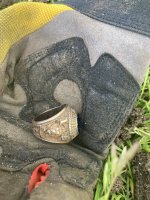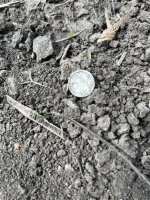landman
Jr. Member
- Apr 27, 2005
- 80
- 15
- Detector(s) used
-
DRS Ground Exper
3 Foot Probe
Shovel
- Primary Interest:
- Metal Detecting
When looking for an iron chest of something on several acres, what instrument(s) would you use? What comes to my mind is:
1.) Magnetometer with Pulse induction metal detector with 12 inch loop to pinpoint any interesting signals.
2.) Pulse unit with 18" loop
3.) Two Box with eagle eye or metal detector for pinpointing if needed.
What say you?
1.) Magnetometer with Pulse induction metal detector with 12 inch loop to pinpoint any interesting signals.
2.) Pulse unit with 18" loop
3.) Two Box with eagle eye or metal detector for pinpointing if needed.
What say you?



 (i.e. distinctive trees, hills, rocks etc.)
(i.e. distinctive trees, hills, rocks etc.)





